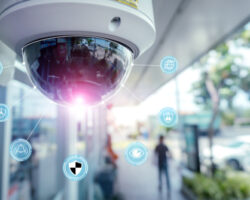 What Does The Future Of Video Surveillance Look Like?
What Does The Future Of Video Surveillance Look Like?
Video surveillance has been a critical aspect of security for several decades now. The traditional security camera system has evolved to become a more sophisticated setup that can cover larger areas, provide better image quality, and integrate with other systems.
Today, video surveillance is ubiquitous; from homes to businesses, and even public places like parks and transportation hubs. With the increasing need for security, video surveillance will only continue to become more pervasive in the coming years. In this blog post, we will examine the future of video surveillance and its potential impact on security.
1. Artificial Intelligence
Artificial intelligence (AI) has the potential to revolutionize the field of video surveillance. AI-powered surveillance systems can detect unusual behavior and can recognize objects and people using facial recognition technology. In the future, AI will play a significant role in helping to prevent crime by identifying potential threats in real-time.
2. Cloud Storage
Video surveillance cameras generate large amounts of data, which requires considerable storage space. This is where cloud storage comes in handy. Cloud storage offers businesses a cost-effective solution to store surveillance footage and data. With the rise of cloud storage, businesses no longer need to worry about the cost of on-site storage systems, and surveillance footage can be accessed from anywhere.
3. Wireless and Mobile Technology
Wireless and mobile technology have made it easier to monitor video surveillance from anywhere. This means that businesses, homeowners, and security personnel can view live feed footage from their mobile devices. In the future, wireless and mobile technology will continue to evolve, allowing for even more seamless video surveillance.
4. 4K Resolution
The advancement of 4K resolution technology will change the way video surveillance is viewed and monitored. 4K resolution cameras capture footage in much higher detail, and as such, provide better and more precise facial recognition, making it easier to identify potential threats. 4K technology also enables better quality recordings, making it easier to review the footage.
5. Hybrid Security Solutions
Video surveillance systems will continue to merge with other security solutions like access control and alarm systems. Hybrid security solutions offer businesses a comprehensive security system that they can monitor from one dashboard. In the future, the integration of various security systems will make it even easier for businesses to manage their security needs.
6. Internet of Things (IoT)
The Internet of Things (IoT) is the interconnection of various devices and systems, enabling them to exchange data and work autonomously. IoT technology will play a significant role in the future of video surveillance. For instance, IoT devices can enable video surveillance cameras to exchange data with other security systems, enabling them to work together to identify potential threats.
7. Drones
Drones have been used in many areas of life, including video surveillance. In the future, drones will continue to bring more advanced features to video surveillance, such as capturing footage from hard-to-reach or restricted areas.
8. Privacy Concerns
The use of video surveillance has sparked many privacy concerns. As video surveillance technology continues to evolve, these concerns are unlikely to disappear. Businesses and policymakers must keep privacy concerns in mind when developing, implementing, and using surveillance systems. As such, the use of video surveillance must be balanced with the right to privacy.
Final Thoughts
The future of video surveillance is exciting and brings a lot of potential for enhancing security. As AI, cloud storage, wireless and mobile technology, 4K resolution, hybrid security solutions, IoT, drones, and privacy concerns all continue to evolve, we can expect a more sophisticated, comprehensive, and efficient surveillance system. Video surveillance will continue to play a critical role in preventing crime and ensuring public safety. However, it is essential to recognize that technology cannot solve all security problems, and we must remain vigilant and aware. As technology continues to evolve, it is important to use it responsibly and considerately in the interest of public safety and privacy.
